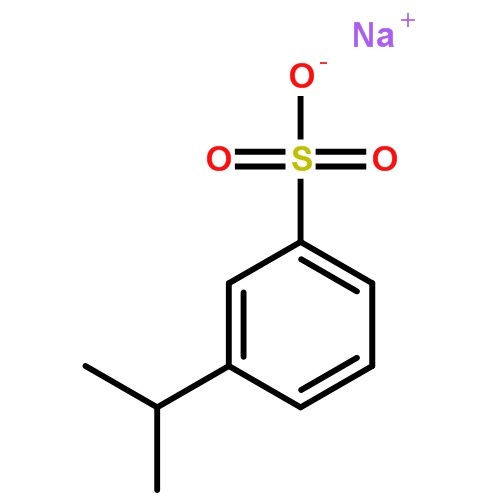
Products
Poly(3,4-ethylenedioxythiophene)-poly(styrenesulfonate) ; CAS No. : 155090-83-8

Synonyms:PEDOT/PSS;PEDT/PSS;POLY(STYRENESULFONATE)/POLY(2,3-DIHYDROTHIENO(3,4-B)-1,4-DIOXIN);POLY(3,4-OXYETHYLENEOXYTHIOPHENE)/POLY(STYRENE SULFONATE);POLY(3,4-ETHYLENEDIOXYTHIOPHENE)/POLY (STYRENESULFONATE);poly(3,4-ethylenedioxythioophene)poly(styrenesulfonate)aq.dispersion;Ethenylbenzenesulfonic acid homopolymer compound with 2,3-dihydrothieno[3,4-b]-1,4-dioxin homopolymer;POLY(STYRENESULFONATE)/POLY(2,3-DIHYDRO-
Chemical Property of Poly(3,4-ethylenedioxythiophene)-poly(styrenesulfonate)
● Melting Point:>300 °C
● Flash Point:100 °C
● PSA:139.87000
● Density:1.011 g/cm3 (dried coatings)
● LogP:4.54980
● Storage Temp.:20-25°C
● Solubility.:: 1.3-1.7% Solidssoluble
Safty Information
● Pictogram(s):R36/38:;
● Hazard Codes:Xi,T,C,Xn
● Statements:36/38-41-61-35-36-22-10-5
● Safety Statements:26-36/37/39-36-45-53
Useful
Description:AI 4083, PH 1000, HTL Solar and HTL Solar 3 for thin-film electronic fabrication
Uses:PEDOT:PSS can be used as an electrode material that forms a layered structure with a high mobility for charge carriers. It can be used for a wide range of energy based applications, such as organic photovoltaics (OPVs), dye sensitized solar cells (DSSCs), organic light emitting diodes (OLEDs) and supercapacitors. Screen Printing results on Autotype Autosta CT7 P77/55 screen with 300 mm/sCuring temp. 130°C during 3 min Conductive ink based on the high conductivity grade PEDOT:PSS polymer dispersion. Suitable for deposition and patterning of transparent conductive films using slot die coating and spin coating in OPV application.
Detailed Introduction
Poly(3,4-ethylenedioxythiophene)-poly(styrenesulfonate), also known as PEDOT:PSS, is a conductive polymer blend commonly used in organic electronic devices such as organic solar cells, organic light-emitting diodes (OLEDs), and organic transistors.
PEDOT:PSS is a composite material consisting of two main components: poly(3,4-ethylenedioxythiophene) (PEDOT) and poly(styrenesulfonate) (PSS). PEDOT provides electrical conductivity, while PSS acts as a stabilizer and enhances the processability and film formation properties of the material.
PEDOT:PSS can be produced by mixing PEDOT and PSS in a solution, which can then be coated onto a substrate using various deposition techniques such as spin-coating, inkjet printing, or doctor-blading. The resulting film exhibits high electrical conductivity, good film-forming properties, and excellent transparency, making it suitable for use in transparent and flexible electronic devices.
Due to its high conductivity, PEDOT:PSS is often used as a transparent electrode material in organic electronic devices, replacing traditional indium tin oxide (ITO) electrodes. It also offers advantages such as flexibility, low processing temperature, and compatibility with various substrates.
Overall, PEDOT:PSS has found widespread applications in the field of organic electronics and is continuously being developed to improve its electrical, mechanical, and thermal properties for more advanced device applications.
Application
Poly(3,4-ethylenedioxythiophene)-poly(styrenesulfonate) (PEDOT:PSS) has several applications due to its unique properties. Some of the notable applications include:
Organic Solar Cells: PEDOT:PSS is widely used as a transparent electrode material in organic photovoltaic devices. It serves as a hole transport layer that collects the positive charges generated by the organic absorber material, promoting efficient charge extraction and improving device performance.
Organic Light-Emitting Diodes (OLEDs): PEDOT:PSS can be used as a hole injection layer or hole transport layer in OLED devices. It facilitates the injection and transport of holes from the anode to the organic emissive layer, aiding in efficient charge recombination and light emission.
Organic Transistors: PEDOT:PSS can be used as an electrode material and source-drain channel in organic field-effect transistors (OFETs). It enables high charge carrier mobility and facilitates efficient charge transport and modulation, enabling the development of flexible and wearable electronics.
Electrochromic Devices: PEDOT:PSS exhibits excellent electrochromic properties, making it suitable for applications in smart windows, displays, and other electrochromic devices. It can change color or opacity in response to an applied voltage, allowing for dynamic control of light transmission.
Sensing Applications: PEDOT:PSS-based sensors can be used for various sensing applications such as strain, pressure, humidity, and temperature sensing. The electrical conductivity of PEDOT:PSS can be modulated by external stimuli, allowing for the detection and measurement of various physical and chemical changes.
Biomedical Applications: PEDOT:PSS has shown promise in bioelectrodes and neural interfaces due to its electrical conductivity, biocompatibility, and ability to interface with biological systems. It can be used in bioelectrodes for biosensing, bioelectronic implants, and biomedical devices.
It's important to note that PEDOT:PSS is a versatile material with ongoing research and development, which may lead to further applications in the future.







![4-propyl-[1,3,2]dioxathiolane-2,2-dioxide ; CAS No. : 165108-64-5](https://cdn.globalso.com/pengnuochemical/4-propyl-132dioxathiolane-22-dioxide-165108-64-5.png)